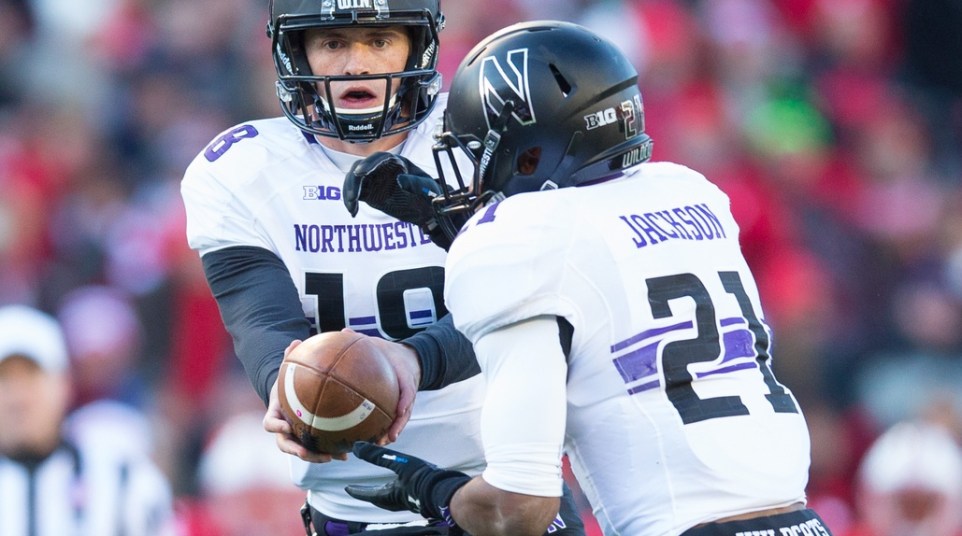Three keys for Northwestern in 2016
Leading up to the start of the 2016 season, we’ll preview three key factors for every B1G team to have success.
Here are Northwestern’s:
1. Get a better push up front
If it weren’t for Justin Jackson, we can only imagine how putrid Northwestern’s offense would have been last season. Even with the stud running back toting the ball for 1,418 yards, the Wildcats were B1G’s worst offensive team, averaging 327.1 yards per contest. A good portion of that credit should be handed to an unhealthy and rotating offensive line.
The struggles of front showed on the stat sheet. Northwestern averaged just 4.47 yards per play, ranking 122nd in the nation. It also allowed 29 sacks, the third-highest t0tal in the conference.
RELATED: Justin Jackson might not be a superhero, but he’s worthy of national attention
As the Wildcats hope to be a more productive team offensively in 2016, one of the most important areas to improve is in the trenches. Seniors Connor Mahoney and Eric Olson will lead the push up front and will be joined by sophomores Tommy Doles, Blake Hance and junior Brad North. That group has to give quarterback Clayton Thorson more time in the pocket and needs to open more running lanes for Jackson.
Staying healthy is going to be huge in 2016 for the Northwestern offensive line.
2. Ends of discussion
Northwestern has some big shoes to fill at defensive end. Dean Lowry and Deonte Gibson thrived on the edge last season, combining for 26 tackles for loss and 12 sacks in their final year in Evanston. Replacing that production is a tall task.
Ifeadi Odenigbo and Xavier Washington can be a solid combination in that role, though.
Odenigbo had a solid season in 2015, recording five sacks and three quarterback hurries to go along with 19 tackles. Washington is still a bit of an unknown but we should know his potential after the first few games of the season.
Getting into the backfield and pressuring the quarterback was a strength for Northwestern last season. It would be an added bonus for the defense if Odenigbo and Washington caused problems for offensive lines and became nightmares for opposing passers.
3. Beef up the passing attack
Receivers dropped passes. The offensive line gave up too many sacks. Thorson was still transitioning to the college game. Northwestern struggled in every aspect of the passing game last season. It’s no surprise the numbers were so dreadful.
With a full year of experience now, things should start to come more naturally for Thorson. He appeared to be in better control throughout spring workouts and the game seemed to slow down for him. Translating that to Saturdays in the fall won’t be an easy thing to do, but his signs of development in the offseason is a good sign for Pat Fitzgerald and the offense.
The real questions come at offensive line and receiver.
RELATED: 20 bold B1G predictions for 2016
Again, the health of the line was the nagging issue that plagued Northwestern throughout last season. A consistent rotation and stability along the front is a step forward. The offense can’t afford to have Thorson on his back 29 times again this season.
And when Thorson is throwing the football, his receivers need to catch it. Whether or not that will happen is still in question.
Northwestern has been rotating receivers constantly in the fall, giving several guys the opportunity to step up. Austin Carr and Solomon Vault will be the primary targets for Thorson. Flynn Nagel, and Andrew Scanlan could be key contributors, too. Right now, there’s still a lot of uncertainty at this position.
The Wildcats really need someone — or a couple someones — to become reliable targets.
